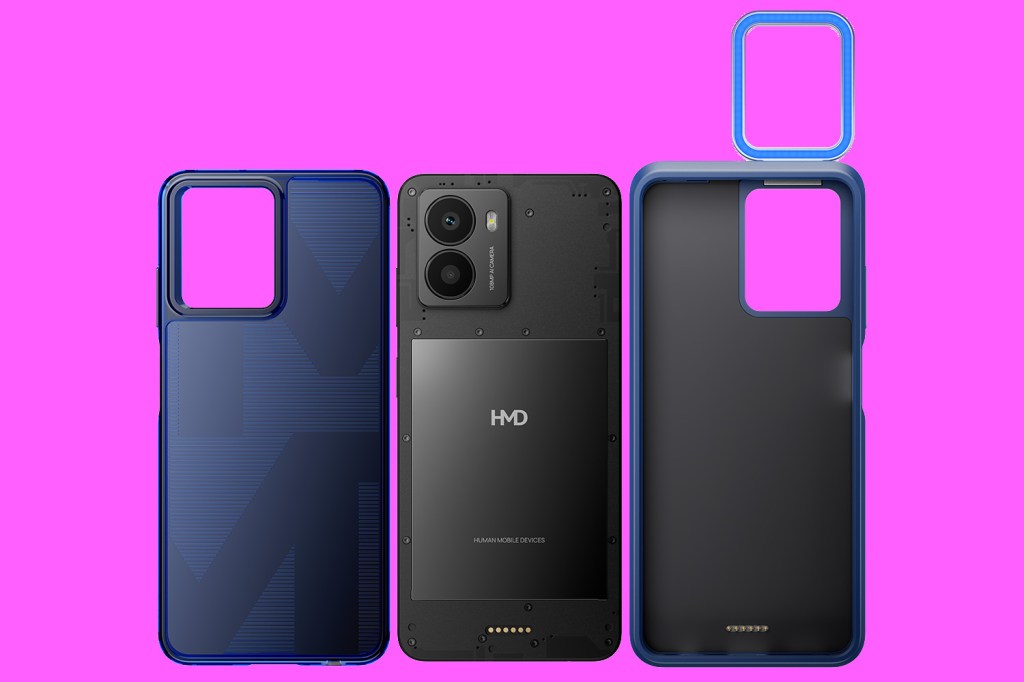If you’re a concerned parent who is yet to get your child a smartphone, or you’re a parent dealing with the tangled web of various parental controls – you are not alone. Now HMD – the maker of Nokia phones – has debuted the HMD Fuse, designed to be easy to manage for parents.
Crucially, the Fuse is a smartphone rather than a dumb phone, so the child can get access to all the key apps they’ll want. Parents can install a partner app on their own smartphone (iOS or Android) which enables them to set time limits, block apps and define screen free times.
But that’s not all – the Fuse is infused with HarmBlock+, a tech designed by UK-based SafeToNet that blocks inappropriate images at the system level, so no sexual imagery can be taken, viewed or shared. This extra software is small, around 35MB and is essentially an AI model that detects any nude imagery. The company worked with the Internet Watch Foundation to train the AI model.
The HMD Fuse is a 6.56in HD+ budget phone running Android 15 on Qualcomm’s Snapdragon 5 Gen 2 platform with 6GB of memory and 128GB of storage. There’s a 108 MP rear camera, 2MP portrait camera and 50MP selfie cam. The phone will be available on Vodafone UK initially from £33 a month with a £30 upfront cost.
Vodafone has also teamed up with the NSPCC over the project and has worked with the charity on a questionnaire that parents can explore to decide if it’s the right time for children to have their first phone.
I saw the HarmBlock+tech in action at an event I attended and the screen essentially goes blank if nude imagery is detected until you move the camera. For web content, an overlay appears on screen, which enables you to return to the previous web page. The tech analyses what’s on the display (or camera) seven times a second.
The technology was demonstrated to us using the camera and some very innocuous images, though the SafeToNet representative says the company has done a lot of work to minimise false positives from innocent images such as a picture of someone in a swimsuit.
The creator of HarmBlock and founder of SafeToNet, Richard Pursey, told us how HarmBlock’s AI focuses on harmful content, as opposed to simply remotely managing a device and the apps running on it.
“What we’ve been able to do is take these enormous, large language models, and we shrunk them down to what we call a mustard seed, without compromising accuracy. Why is that important? Because, of course, these devices don’t have huge processing power, like you’d see on the big server farms.”
App-agnostic tech
The crucial bit is that the tech is completely app-agnostic. “With the Online Safety Act and the introduction of age verification technology, you’ll know that there’s a workaround with VPNs,” continues Pursey.
“Well, there isn’t with harm lock, because [HarmBlock+ is] in the screen rendering technology. By the time it’s got to the screen, it’s come out of the VPN. So if the child wants to pretend they’re in Timbuktu, fine, well, that’s fine by us. That won’t make any difference, because you’re not going to see it.”

Vodafone’s research found that while 93% of parents support their child having an internet-connected device, they’re concerned about them being sent explicit images (46%) or sending images themselves (28%). The network says one in five secondary school aged children have felt pressured into sharing an explicit image of themselves.
The HMD Fuse came out of an project that HMD embarked upon last year, called that the Better Phone Project. James Robinson, head of HMD Family says: “we had 37,000 parents and their children participating, really trying to find out what’s missing [from a phone]. What do you need? What would you like to see more of? it was really insightful.
“The HMD Fuse gives parents more control and peace of mind and helps to protect children from explicit content in real time, without encroaching on their privacy.”

